Chad
Chad, officially known as the Republic of Chad , is a landlocked country in north-central Africa. It is bordered by Libya to the north, Sudan to the east, the Central African Republic to the south, Cameroon to the south-west, Nigeria to the southwest (at Lake Chad), and Niger to the west.
Chad has several regions: a desert zone in the north, an arid Sahelian belt in the centre and a more fertile Sudanian Savanna zone in the south. Lake Chad, after which the country is named, is the largest wetland in Chad and the second-largest in Africa. The capital N’Djamena is the largest city. Chad’s official languages are Arabic and French. Chad is home to over 200 different ethnic and linguistic groups. The most popular religion of Chad is Islam (at 55%), followed by Christianity (at 40%).
Beginning in the 7th millennium BC, human populations moved into the Chadian basin in great numbers. By the end of the 1st millennium AD, a series of states and empires had risen and fallen in Chad’s Sahelian strip, each focused on controlling the trans-Saharan trade routes that passed through the region.
France conquered the territory by 1920 and incorporated it as part of French Equatorial Africa. In 1960, Chad obtained independence under the leadership of François Tombalbaye. Resentment towards his policies in the Muslim north culminated in the eruption of a long-lasting civil war in 1965. In 1979 the rebels conquered the capital and put an end to the South’s hegemony. But, the rebel commanders fought amongst themselves until Hissène Habré defeated his rivals. Chadian–Libyan conflict erupted in 1978 by the Libyan invasion which stopped in 1987 with a French military intervention (Operation Épervier). Hissène Habré was overthrown in turn in 1990 by his general Idriss Déby. With French support, a modernization of the Chadian armed forces was initiated in 1991. Since 2003 the Darfur crisis in Sudan has spilt over the border and destabilised the nation. Poor already, the nation and people struggled to accommodate the hundreds of thousands of Sudanese refugees who live in and around camps in eastern Chad.
While many political parties are active, power lies firmly in the hands of President Déby and his political party, the Patriotic Salvation Movement. Chad remains plagued by political violence and recurrent attempted coups d’état. Chad is one of the poorest and most corrupt countries in the world; most inhabitants live in poverty as subsistence herders and farmers. Since 2003 crude oil has become the country’s primary source of export earnings, superseding the traditional cotton industry.
Chad’s history
In the 7th millennium BCE, ecological conditions in the northern half of Chadian territory favored human settlement, and the region experienced a strong population increase. Some of the most important African archaeological sites are found in Chad, mainly in the Borkou-Ennedi-Tibesti Region; some date to earlier than 2000 BCE.
For more than 2,000 years, the Chadian Basin has been inhabited by agricultural and sedentary people. The region became a crossroads of civilizations. The earliest of these were the legendary Sao, known from artifacts and oral histories. The Sao fell to the Kanem Empire,the first and longest-lasting of the empires that developed in Chad’s Sahelian strip by the end of the 1st millennium AD. Two other states in the region, Sultanate of Bagirmi and Wadai Empire emerged in the 16th and 17th centuries. The power of Kanem and its successors was based on control of the trans-Saharan trade routes that passed through the region. These states, at least tacitly Muslim, never extended their control to the southern grasslands except to raid for slaves.In Kanem, about a third of the population were slaves.
French colonial expansion led to the creation of the Territoire Militaire des Pays et Protectorats du Tchad in 1900. By 1920, France had secured full control of the colony and incorporated it as part of French Equatorial Africa.French rule in Chad was characterised by an absence of policies to unify the territory and sluggish modernisation compared to other French colonies.
The French primarily viewed the colony as an unimportant source of untrained labour and raw cotton; France introduced large-scale cotton production in 1929. The colonial administration in Chad was critically understaffed and had to rely on the dregs of the French civil service. Only the Sara of the south was governed effectively; French presence in the Islamic north and east was nominal. The educational system was affected by this neglect.
After World War II, France granted Chad the status of overseas territory and its inhabitants the right to elect representatives to the National Assembly and a Chadian assembly. The largest political party was the Chadian Progressive Party (French: Parti Progressiste Tchadien, PPT), based in the southern half of the colony. Chad was granted independence on 11 August 1960 with the PPT’s leader, François Tombalbaye, an ethnic Sara, as its first president.
Two years later, Tombalbaye banned opposition parties and established a one-party system. Tombalbaye’s autocratic rule and insensitive mismanagement exacerbated inter-ethnic tensions. In 1965, Muslims in the north, led by the National Liberation Front of Chad (French: Front de libération nationale du Tchad, FRONILAT), began a civil war. Tombalbaye was overthrown and killed in 1975,but the insurgency continued. In 1979 the rebel factions led by Hissène Habré took the capital, and all central authority in the country collapsed. Armed factions, many from the north’s rebellion, contended for power.
The disintegration of Chad caused the collapse of France’s position in the country. Libya moved to fill the power vacuum and became involved in Chad’s civil war. Libya’s adventure ended in disaster in 1987; the French-supported president, Hissène Habré, evoked a united response from Chadians of a kind never seen before and forced the Libyan army off Chadian soil.
Habré consolidated his dictatorship through a power system that relied on corruption and violence with thousands of people estimated to have been killed under his rule. The president favoured his own Toubou ethnic group and discriminated against his former allies, the Zaghawa. His general, Idriss Déby, overthrew him in 1990.Attempts to prosecute Habré led to his placement under house arrest in Senegal in 2005; in 2013, Habré was formally charged with war crimes committed during his rule.In May 2016, he was found guilty of human-rights abuses, including rape, sexual slavery, and ordering the killing of 40,000 people, and sentenced to life in prison.
Déby attempted to reconcile the rebel groups and reintroduced multiparty politics. Chadians approved a new constitution by referendum, and in 1996, Déby easily won a competitive presidential election. He won a second term five years later.Oil exploitation began in Chad in 2003, bringing with it hopes that Chad would at last have some chances of peace and prosperity. Instead, internal dissent worsened, and a new civil war broke out. Déby unilaterally modified the constitution to remove the two-term limit on the presidency; this caused an uproar among the civil society and opposition parties.
In 2006 Déby won a third mandate in elections that the opposition boycotted. Ethnic violence in eastern Chad has increased; the United Nations High Commissioner for Refugees has warned that a genocide like that in Darfur may yet occur in Chad. In 2006 and in 2008 rebel forces attempted to take the capital by force, but failed on both occasions. An agreement for the restoration of harmony between Chad and Sudan, signed 15 January 2010, marked the end of a five-year war. The fix in relations led to the Chadian rebels from Sudan returning home, the opening of the border between the two countries after seven years of closure, and the deployment of a joint force to secure the border. In May 2013, security forces in Chad foiled a coup against President Idriss Déby that had been in preparation for several months.
Chad is currently one of the leading partners in a West African coalition in the fight against Boko Haram. Chad has also been included on Presidential Proclamation 9645, the expanded version of United States president Donald Trump’s Executive Order 13780, which restricts entry by nationals from 8 countries, including Chad, into the US. This move has angered the Chadian government.
Chad’s politics
Chad’s constitution provides for a strong executive branch headed by a president who dominates the political system. The president has the power to appoint the prime minister and the cabinet, and exercises considerable influence over appointments of judges, generals, provincial officials and heads of Chad’s para-statal firms. In cases of grave and immediate threat, the president, in consultation with the National Assembly, may declare a state of emergency. The president is directly elected by popular vote for a five-year term; in 2005 constitutional term limits were removed,allowing a president to remain in power beyond the previous two-term limit.Most of Déby’s key advisers are members of the Zaghawa ethnic group, although southern and opposition personalities are represented in government.
Chad’s legal system is based on French civil law and Chadian customary law where the latter does not interfere with public order or constitutional guarantees of equality. Despite the constitution’s guarantee of judicial independence, the president names most key judicial officials. The legal system’s highest jurisdictions, the Supreme Court and the Constitutional Council, have become fully operational since 2000. The Supreme Court is made up of a chief justice, named by the president, and 15 councillors, appointed for life by the president and the National Assembly. The Constitutional Court is headed by nine judges elected to nine-year terms. It has the power to review legislation, treaties and international agreements prior to their adoption.
The National Assembly makes legislation. The body consists of 155 members elected for four-year terms who meet three times per year. The Assembly holds regular sessions twice a year, starting in March and October, and can hold special sessions when called by the prime minister. Deputies elect a National Assembly president every two years. The president must sign or reject newly passed laws within 15 days. The National Assembly must approve the prime minister’s plan of government and may force the prime minister to resign through a majority vote of no confidence. However, if the National Assembly rejects the executive branch’s programme twice in one year, the president may disband the Assembly and call for new legislative elections. In practice, the president exercises considerable influence over the National Assembly through his party, the Patriotic Salvation Movement (MPS), which holds a large majority.
Until the legalisation of opposition parties in 1992, Déby’s MPS was the sole legal party in Chad. Since then, 78 registered political parties have become active. In 2005, opposition parties and human rights organisations supported the boycott of the constitutional referendum that allowed Déby to stand for re-election for a third term amid reports of widespread irregularities in voter registration and government censorship of independent media outlets during the campaign.Correspondents judged the 2006 presidential elections a mere formality, as the opposition deemed the polls a farce and boycotted them.
Chad is listed as a failed state by the Fund for Peace (FFP). In 2007 Chad had the seventh highest score on the failed state index. Since then the trend has been upwards each year. Chad had the fourth highest score (behind Sudan) on the Failed State Index of 2012 and as of 2013, is ranked fifth. Corruption is rife at all levels; Transparency International’s Corruption Perceptions Index for 2005 named Chad (tied with Bangladesh) as the most corrupt country in the world.Chad’s ranking on the index has improved only marginally in recent years. Since its first inclusion on the index in 2004, Chad’s best score has been 2/10 for 2011.Critics of President Déby have accused him of cronyism and tribalism.
In southern Chad, bitter conflicts over land are becoming more and more common. They frequently turn violent. Long-standing community culture is being eroded – and so are the livelihoods of many farmers.
Chad’s economy
The United Nations’ Human Development Index ranks Chad as the seventh poorest country in the world, with 80% of the population living below the poverty line. The GDP (Purchasing power parity) per capita was estimated as US$1,651 in 2009. Chad is part of the Bank of Central African States, the Customs and Economic Union of Central Africa (UDEAC) and the Organization for the Harmonization of Business Law in Africa (OHADA).
Chad’s currency is the CFA franc. In the 1960s, the Mining industry of Chad produced sodium carbonate, or natron. There have also been reports of gold-bearing quartz in the Biltine Prefecture. However, years of civil war have scared away foreign investors; those who left Chad between 1979 and 1982 have only recently begun to regain confidence in the country’s future. In 2000 major direct foreign investment in the oil sector began, boosting the country’s economic prospects.
An uneven inclusion into the global political economy as a site for colonial resource extraction (primarily cotton and crude oil), a global economic system that does not promote nor encourage the development of Chadian industrialization, and the failure to support local agricultural production has meant that the majority of Chadians live in daily uncertainty and hunger. Over 80% of Chad’s population relies on subsistence farming and livestock raising for its livelihood. The crops grown and the locations of herds are determined by the local climate. In the southernmost 10% of the territory lies the nation’s most fertile cropland, with rich yields of sorghum and millet. In the Sahel only the hardier varieties of millet grow, and these with much lower yields than in the south. On the other hand, the Sahel is ideal pastureland for large herds of commercial cattle and for goats, sheep, donkeys and horses. The Sahara’s scattered oases support only some dates and legumes.Chad’s cities face serious difficulties of municipal infrastructure; only 48% of urban residents have access to potable water and only 2% to basic sanitation.
Before the development of oil industry, cotton dominated industry and the labour market accounted for approximately 80% of export earnings.Cotton remains a primary export, although exact figures are not available. Rehabilitation of Cotontchad, a major cotton company weakened by a decline in world cotton prices, has been financed by France, the Netherlands, the European Union, and the International Bank for Reconstruction and Development (IBRD). The parastatal is now expected to be privatised.Other than Cotton, Cattle and Gum Arabic are dominant.
According to the United Nations, Chad has been affected by a humanitarian crisis since at least 2001. As of 2008, the country of Chad hosts over 280,000 refugees from the Sudan’s Darfur region, over 55,000 from the Central African Republic, as well as over 170,000 internally displaced persons.In February 2008 in the aftermath of the battle of N’Djamena, UN Under-Secretary-General for Humanitarian Affairs John Holmes expressed “extreme concern” that the crisis would have a negative effect on the ability of humanitarians to deliver life-saving assistance to half a million beneficiaries, most of whom – according to him – heavily rely on humanitarian aid for their survival.[106] UN spokesperson Maurizio Giuliano stated to The Washington Post: “If we do not manage to provide aid at sufficient levels, the humanitarian crisis might become a humanitarian catastrophe”.In addition, organizations such as Save the Children have suspended activities due to killings of aid workers.
Chad’s demography
Chad’s national statistical agency projected the country’s 2015 population between 13,630,252 and 13,679,203, with 13,670,084 as its medium projection; based on the medium projection, 3,212,470 people lived in urban areas and 10,457,614 people lived in rural areas.The country’s population is young: an estimated 47.3% is under 15. The birth rate is estimated at 42.35 births per 1,000 people, the mortality rate at 16.69. The life expectancy is 52 years.
Chad’s population is unevenly distributed. Density is 0.1/km2 (0.26/sq mi) in the Saharan Borkou-Ennedi-Tibesti Region but 52.4/km2 (136/sq mi) in the Logone Occidental Region. In the capital, it is even higher.About half of the nation’s population lives in the southern fifth of its territory, making this the most densely populated region.
Urban life is concentrated in the capital, whose population is mostly engaged in commerce. The other major towns are Sarh, Moundou, Abéché and Doba, which are considerably smaller but growing rapidly in population and economic activity. Since 2003, 230,000 Sudanese refugees have fled to eastern Chad from war-ridden Darfur. With the 172,600 Chadians displaced by the civil war in the east, this has generated increased tensions among the region’s communities.
Polygamy is common, with 39% of women living in such unions. This is sanctioned by law, which automatically permits polygamy unless spouses specify that this is unacceptable upon marriage. Although violence against women is prohibited, domestic violence is common. Female genital mutilation is also prohibited, but the practice is widespread and deeply rooted in tradition; 45% of Chadian women undergo the procedure, with the highest rates among Arabs, Hadjarai, and Ouaddaians (90% or more). Lower percentages were reported among the Sara (38%) and the Toubou (2%). Women lack equal opportunities in education and training, making it difficult for them to compete for the relatively few formal-sector jobs. Although property and inheritance laws based on the French code do not discriminate against women, local leaders adjudicate most inheritance cases in favour of men, according to traditional practice.
Chad’s education
Educators face considerable challenges due to the nation’s dispersed population and a certain degree of reluctance on the part of parents to send their children to school. Although attendance is compulsory, only 68 percent of boys attend primary school, and more than half of the population is illiterate. Higher education is provided at the University of N’Djamena. At 33 percent, Chad has one of the lowest literacy rates of Sub-Saharan Africa.In 2013, the U.S. Department of Labor’s Findings on the Worst Forms of Child Labor in Chad reported that school attendance of children aged 5 to 14 was as low as 39%. This can also be related to the issue of child labor as the report also stated that 53% of children aged 5 to 14 were working children, and that 30% of children aged 7 to 14 combined work and school. A more recent DOL report listed cattle herding as a major agricultural activity that employed underage children.
Chad’s language
Chad’s official languages are Arabic and French, but over 100 languages and dialects are spoken. Due to the important role played by itinerant Arab traders and settled merchants in local communities, Chadian Arabic has become a lingua franca.
-
Chad
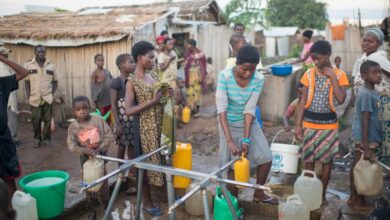
WFP Makes Urgent Funding Appeal to Assist 2.3 Million In Need Of Food In Chad
The United Nations World Food Programme (WFP) on Thursday made an urgent appeal for $162.4 million to support the Chad…
Read More » -
Chad
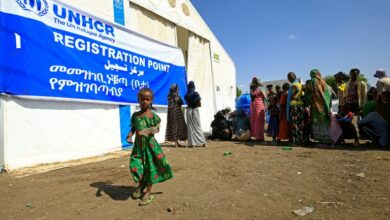
UN Agencies Warn Urgent Funding Needed To Feed Refugees Next Month In Chad
The United Nations (UN) on Friday warned that without immediate international funding, it will not be able to feed 600,000…
Read More » -
Chad

German Foreign Ministry Expels Chad’s Ambassador Mariam Ali Moussa
The German Foreign Ministry on Tuesday ordered Chad’s ambassador in Berlin, Mariam Ali Moussa, to leave the country within 48…
Read More » -
Chad

Chad’s Interim President Pardons 380 Rebels Jailed For Death Of Former President
Chad’s interim president, Mahamat Idriss Deby, on Monday pardoned 380 rebels from The Front for Change and Concord in Chad…
Read More » -
Chad

Chad Government To Try Rebel Soldiers Accused Of Killing President Idriss Deby
The Chad government will start trying 150 rebels accused of causing the death of President Idriss Déby on Monday. The…
Read More » -
Chad

Chad’s Government Confirms Security Forces Foiled Coup Attempt By Military Officers
Chad’s government on Friday announced in a statement that the country’s security forces have successfully foiled an attempt by a…
Read More » -
Chad
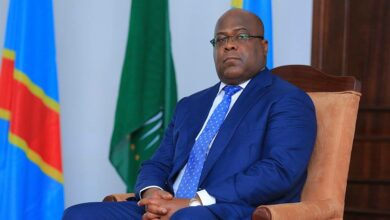
DRC President Felix Tshisekedi Appointed As Facilitator For Chad Crisis
Democratic Republic of Congo’s (DRC) President Felix Tshisekedi has been appointed as a facilitator for the political transition process in…
Read More » -
Chad
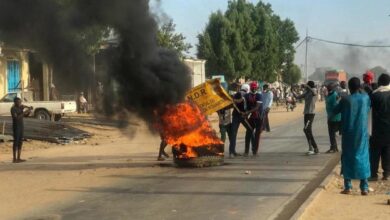
Chad’s Government Announces Curfew As 50 People Get Killed In Anti-Government Protests
Chad’s government announced an overnight curfew on Thursday after the security forces opened fire on anti-government demonstrators in the country’s…
Read More » -
Chad

Chad’s President Declares State Of Emergency Amid Worsening Flood Situation
Chad’s President Mahamat Idriss Deby on Wednesday declared a state of emergency in the central African country over flooding that…
Read More » -
Chad
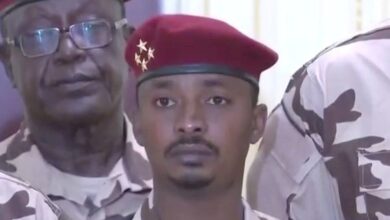
Chad’s Interim President Names Ex-rebels As Ministers In New Unity Government
Chad’s military leader and interim president Mahamat Idriss Deby Itno has named several former rebels to ministerial posts in the…
Read More » -
Chad
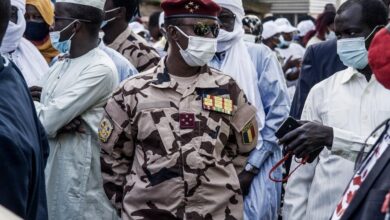
Chad’s Interim President Mahamat Deby Appoints Saleh Kebzabo As New Prime Minister
Chad’s military leader and interim president Mahamat Idriss Deby Itno on Wednesday appointed veteran Chadian politician and former opposition figure…
Read More » -
Chad
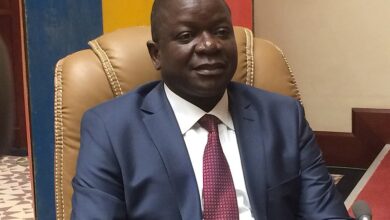
Chad’s Prime Minister Albert Padacke Resigns To Pave Way For New Government
Chad’s Prime Minister Albert Pahimi Padacke on Tuesday resigned to pave the way for a new government after the Central…
Read More » -
Chad

Chad’s Opposition Describes Deby’s Swearing-In As Evidence Of Democratic Regression
Chad’s main opposition party has described the swearing-in of Mahamat Idriss Déby as the interim president for another two years…
Read More » -
Chad

Chad’s Military Leader Idriss Deby Itno To Get Sworn-in As Interim President
Chad’s military leader, Mahamat Idriss Deby Itno, will be inaugurated as the country’s interim president in the capital city of…
Read More » -
Chad

Chad’s National Forum Extends Transition For Elections, Agrees For Deby To Stay On
Chad’s military junta has extended duration of the transition period towards democratic elections with Mahamat Idriss Deby Itno continuing as…
Read More » -
Chad

Chad’s Foreign Affairs Minister Resigns As Government Engages Rebels In Talks
Chad’s Foreign Affair Minister Cherif Mahamat Zene on Monday announced he was stepping down from the post due to disagreements…
Read More » -
Chad

Chad Government Confirms National Dialogue Will Begin On Wednesday
Chad government’s spokesman on Tuesday said the work of the inclusive national dialogue (DNI) between the ruling junta and the…
Read More » -
Chad

Chad’s Military Signs Deal With Rebel Groups In Qatar Ahead Of National Dialogue
Chad’s transitional military council signed a deal with rebel groups in the Qatari capital Doha on Monday paving the way…
Read More » -
Chad

Chad’s Rebel Groups Ready To Resume Peace-Building Talks With Interim Authorities
Chad’s rebel groups on Friday said they are ready to resume peace-building talks with the interim authorities, after breaking off…
Read More » -
Chad

Chad’s Transitional Government Sets Date for National Dialogue in August
Chad’s government on Thursday said it has scheduled a national dialogue starting August 20, paving way for elections promised by…
Read More » -
Chad

Chad Government Declares Food Emergency, Calls For International Help
The Chad government on Thursday declared a food emergency in the impoverished landlocked country, calling for immediate help from the…
Read More » -
Chad

Chad’s Transitional Council Announces Postponement Of National Dialogue
Chad’s transitional council on Sunday announced it has decided to postpone a national dialogue that was scheduled to take place…
Read More » -
Chad

Peace Talks Between Chad’s Government, Opposition Groups In Doha Adjourned
The peace talks between Chad’s government and opposition groups, which kicked off on Sunday in Doha, were suspended after representatives…
Read More » -
Chad

Chad’s Military Junta Postpones National Forum Designed To Chart Country’s Future To May
Chad’s ruling military junta on Thursday announced a national forum that was designed to chart the country’s future has been…
Read More » -
Cameroon
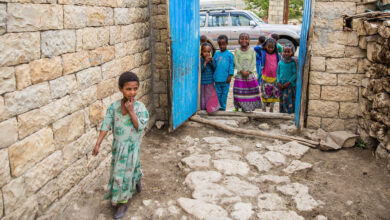
UNHCR Says Cameroon’s Intercommunal Clashes Continue To Displace Thousands
The United Nations Refugee Agency (UNHCR) on Friday said inter-communal clashes in Cameroon’s Far North region have forced at least…
Read More »

